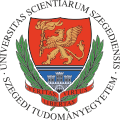Container Images
Container images are immutable, snapshotted states of a container. They contain the filesystem of containers (including system files, configuration files, and application files), but also parameters required for properly running a container that is instantiated from it, like the entry point (the program to be started), the user account of the started program, etc.
Basic Usage
Obtaining a container image
Although Docker automatically downloads the right container image when a container is run for the first time, you may want to download it earlier than that.
You can use docker image pull <name> for this purpose:
$ sudo docker pull gitea/gitea
Using default tag: latest
latest: Pulling from gitea/gitea
ef5531b6e74e: Pull complete
ab8bb6fd5d53: Pull complete
e24dd90f528a: Pull complete
1c9e4370e57b: Pull complete
4b30b17675f2: Pull complete
9b32fd3f7863: Pull complete
bdf38634abf8: Pull complete
83d2e7692aa6: Pull complete
Digest: sha256:4c54a18fc46fe81b6f1400e3b03f187952de50ff464f199bba1215b71881475f
Status: Downloaded newer image for gitea/gitea:latest
docker.io/gitea/gitea:latest
With this command images are downloaded from a container registry.
When no container registry is given at the beginning of the name, Docker Hub is assumed.
Listing downloaded images
Container images can take up quite some storage space.
To find out which ones you have downloaded, and how much space they take up, you can use the docker image ls command:
$ sudo docker image ls
REPOSITORY TAG IMAGE ID CREATED SIZE
gitea/gitea latest 9d4928991c26 3 weeks ago 257MB
openhab/openhab 3.4.2 51901f4fc8ab 4 weeks ago 724MB
debian latest 54e726b437fb 5 weeks ago 124MB
linuxserver/mariadb alpine dc4c3424fd43 5 months ago 289MB
containous/whoami latest 0f6fbbedd377 3 years ago 7.37MB
Removing images
If you don’t need an image anymore, you can remove it with docker image rm <name>:
$ sudo docker image rm gitea/gitea
Untagged: gitea/gitea:latest
Untagged: gitea/gitea@sha256:4c54a18fc46fe81b6f1400e3b03f187952de50ff464f199bba1215b71881475f
Deleted: sha256:9d4928991c2691eec88c96573da866cdbb5a6b1c4f4ef6ef2ad1ec52375aab23
Deleted: sha256:4ef365e73bc587daa4164a00a5717708d767ede2b2500fa371b1dc9ff691758e
[...]
Advanced Usage
Management of images are done with subcommands of the docker image command.
Identification of images
Images are identified by their names and tags, or their “digests”: NAME[:TAG|@DIGEST].
Images can always be referred to in this format.
Their name is a human readable name, usually the name of a software. They might contain different sections that are divided by / characters:
- When obtained from a container registry, the name will also include the user or organization that publishes it (e.g.
gitea/gitea). - Names might also contain the container registry from where they were downloaded (e.g.
lscr.io/linuxserver/wireguard).
In this last example, the image is searched for and downloaded from the lscr.io container registry.
Tags are used to differentiate between different flavors of the image, based on version number, release type (release, development, nightly), base linux distribution, or others.
When no tags are specified, latest is used.
latest frequently points to the last uploaded container image, which might be a nightly release when you just wanted the latest stable one, so its use is generally discouraged.
A specific NAME:TAG pair might still have further image variants when different images are built for different “platforms” (CPU architectures).
The digest is the checksum (usually SHA256) of (the top layer of) a container image.
Additional ways for obtaining images
Manually loading images of the OCI image format
Sometimes the image you want to use was built on a different system, and you may not want to upload it to a container registry.
In that case, you can export and import it in a tar file:
docker image save --output gitea_1.18.5.tar local/gitea:1.18.5
docker image load --input gitea_1.18.5.tar
Do not mix up docker export and docker import with these commands! They only manage the filesystem of the image, they ignore any configuration stored in it, such as the file to be ran on startup.
Uploading to a container registry
First you have to log in to your user account on the container registry to which you want to upload the image, with the docker login --username <username> --password-stdin [container registry server URL] command.
Then you can use docker image push <image> to start the upload process.
Creating images
You can also create your own container images. There are 2 ways for that:
- with the build process using
Dockerfiles (the proper way) - by snapshotting a container, thus preserving its current state in a new immutable layer
